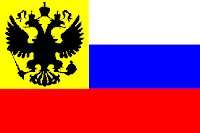On Monday we watched Oh! What a lovely war (directed by Richard Attenborough.) This film is based on a musical about the First World War and I vaguely remember going to see a production of this at my secondary school nine years ago.
I really like how this film has a light hearted, upbeat nature throughout, contradicting the horrible events that are taking place around the characters.
The film opens with stills of World War 1 artefacts e.g. guns, grenades, helmets, badges etc. which I found useful in terms of research for this project.
The audience then sees what looks to me like a set from stage with white arches and white tables & chairs. There is a world map on the floor where the characters from different countries stand on and discuss whether to go to war. The story is constantly brought back to this room, symbolising higher authority and where important decisions are made.
This film has very much kept its theatrical roots with its enthusiasm, songs and even the set which I think makes this film quite effective.
I thought the way that the war was being compared to a funfair was very effective, again tying in with the light hearted nature but devastating events. A scene where “World War One” is written in lights, like the entrance to a funfair. The characters all cheer and queue up to enter it as if it were a funfair. Each game or ride in this funfair symbolises something sinister happening in the war e.g. a man is playing a game where you shoot cardboard men behind a stool, the viewer then sees this man shooting at real men from a trench.
We also see children watching a puppet show about the war, but then real soldiers are on a carousel and are shot down. I think the combination of things associated with children mixed with warfare really hits home with the audience, making the film’s point more devastating.
I found costumes interesting in this film as the men in trenches wore dull earthy colours e.g. khaki and brown but at home in England characters wore pastel colours; the rich characters wore elaborate costumes e.g. full length tasselled dresses with fur shawls and headdresses. As the war progresses the characters at home wear darker clothes as they realise somebody they know has died during the war.
I like the use of an almost mysterious character throughout the film as he crops up as minor characters e.g. the photographer at the start of the film, a soldier and a waiter. He observes what is happening, but narrates to the viewer. I also got the impression that he knew what was going to happen before the characters did making him an interesting addition to the film. I found one of the ending scenes interesting where this character walks through the white set (from the beginning of the film) and it has a red ribbon tied around it. I think that this is effective in symbolising the unnecessary bloodshed of World War 1.
Overall I really enjoyed this film and it has helped me to get into the mind-set for finding a narrative for the props I will be producing.





























